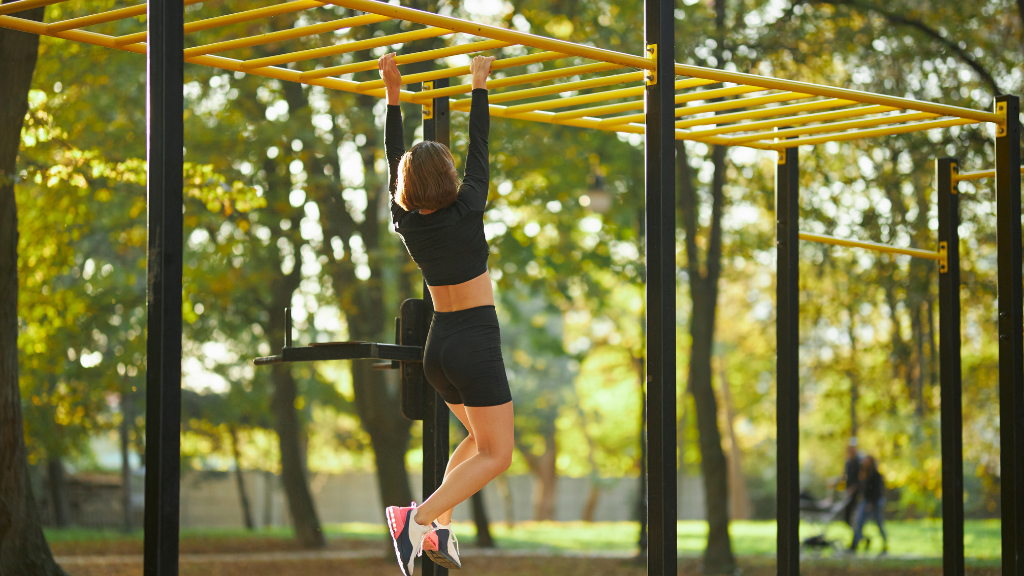
Does Hanging Increase Height?
|
|
Time to read 3 min
If you’ve ever searched for natural ways to grow taller, you’ve probably come across one popular suggestion: hanging . The idea is simple—gravity compresses your spine throughout the day, and hanging might counter that compression, stretch your spine, and help you grow taller. But does it really work? Let’s unpack the science behind hanging and its actual effects on height. [¹]
What Causes Height to Change?
First, it’s important to understand that your height isn’t static . You can actually be a bit taller in the morning than at night due to spinal compression during the day [¹]. The intervertebral discs between your spine’s vertebrae act like shock absorbers. Gravity slowly compresses them as you sit, walk, and move throughout the day. [⁴]
By decompressing the spine, hanging aims to restore the natural spacing between those discs—possibly making you slightly taller temporarily.[⁴]

Can Hanging Increase Your Height?
Temporary Height Gains
Yes—but only temporarily . A study published in Clinical Biomechanics showed that certain spinal hyperextension exercises caused a short-term increase in height among participants ² . Similar decompressive movements like hanging may allow a temporary regain of height lost during the day.
In simple terms: hanging won’t make you grow taller permanently , but it can help you stand at your tallest by reducing spinal compression[²].
Posture Correction = Height Illusion
Another benefit of hanging? Improved posture . Slouching or spinal misalignment can make you appear shorter than you actually are. Regularly performing hanging exercises can relieve tension in your spine, stretch your back muscles, and help you stand straighter [³].
Some people who commit to better posture through exercises and stretches may "gain" 1–2 inches in visible height—not because their bones grew, but because they’re now standing at their full potential[⁴].
What the Experts Say
Many fitness and orthopedic professionals support hanging—for spinal health, not height gains. According to a 2023 article from Happiest Health, exercises like swimming, yoga, and hanging may reduce spinal compression , but they won’t increase your height beyond your genetic limits [⁵].
Similarly, the American Academy of Orthopaedic Surgeons notes that growth plates close after puberty , which means that no exercise—including hanging—can lengthen bones after adolescence[⁶].
How to Incorporate Hanging Safely

If you’d like to try hanging exercises for spinal health and posture, here are some tips:
Use a stable bar (pull-up bars work great) [²]
Hang for 20–30 seconds at a time [²]
Do 3–5 repetitions , several days per week [²]
Keep your core tight and avoid swinging excessively [²]
If you're new to hanging, start slow. You’ll build grip strength and tolerance over time.
Added Benefits of Hanging
Even if it won’t make you taller for good, hanging comes with great health perks:
Spinal decompression: Eases pressure in the lower back
Posture support: Helps open tight shoulders and straighten the spine
Grip strength: Builds forearm muscles and hand endurance
Upper-body mobility: Supports shoulder and back flexibility
These benefits contribute to a taller appearance and healthier spine function overall[³].
Natural Ways to Support Height Growth
For kids and teens whose growth plates are still open, combining hanging with other habits may help maximize growth potential:
Balanced diet: Ensure intake of calcium, protein, vitamin D, and other growth-supporting nutrients.
Exercise: Incorporate stretching, yoga, and strength training.
Sleep: Teens need 8–10 hours of sleep for proper growth hormone release [⁶].
Avoid growth stunting factors: Stay away from smoking, alcohol, and poor nutrition.
Hanging can be one tool in a well-rounded routine to support posture and spinal health.

Conclusion
So, does hanging increase height? Not in the way you might hope. While it won’t change your bone structure or genetics, it can help you regain lost height due to compression and improve your posture—both of which make you look taller. Plus, the added benefits to your spine, shoulders, and grip strength make it a worthwhile practice, whether you're chasing height or simply want to feel your best.
If you're a teen still in your growth years, hanging—combined with a healthy lifestyle—might help you reach your full genetic height potential . And for adults, it’s a great way to take care of your spine, enhance posture, and stand tall.
FAQs
Can adults permanently grow taller through hanging?
How often should I do hanging exercises?
Aim for 3–4 sessions per week, starting with 20–30 seconds per set. Consistency is key for posture support and spinal health [³].
Can hanging help scoliosis or back pain?
Hanging may relieve spinal pressure, but if you have scoliosis or chronic back issues, consult a healthcare provider before trying it[⁶].
References
Magnusson, M. L., & Pope, M. H. (1997). Body height changes with hyperextension. Clinical Biomechanics, 12(2), 101–106. https://pubmed.ncbi.nlm.nih.gov/11415684/
López-Rivera, E., et al. (2019). The effects of a weighted dead-hang training program on grip strength and endurance in expert climbers with different levels of strength . 4th International Rock Climbing Research Congress.
Oranchuk, D. J., et al. (2018). Isometric training and long-term adaptations: Effects of muscle length, intensity, and intent: A systematic review . Scandinavian Journal of Medicine & Science in Sports.
American Academy of Orthopaedic Surgeons. (2020). Growth Plate Injuries. https://orthoinfo.aaos.org/en/diseases--conditions/growth-plate-fractures
NIH. (n.d.). Nutrition and Growth in Adolescents. https://www.nichd.nih.gov/health/topics/adolescenthealth
Sleep Foundation. (2023). Recommended Sleep for Children and Teens. https://www.sleepfoundation.org/how-sleep-works/how-much-sleep-do-we-really-need






